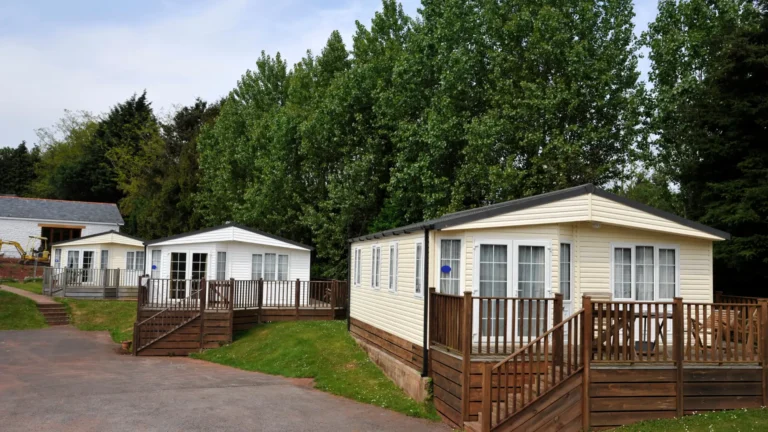The idea of small home living is gaining traction as people seek affordable, flexible, and cozy housing options. Among these, the park model home is a unique and growing popular choice. Whether you’re looking for a vacation retreat, a retirement haven, or a minimalist lifestyle, park model homes offer an interesting blend of mobility, comfort, and charm. Let’s dive into what makes these homes special, how they differ from another small dwelling,s and why they might be the perfect fit for you.
What is a Park Model Home?
A park model home is a type of recreational vehicle (RV) designed to provide comfortabl,e small living spaces up to 400 square feet. Unlike typical RVs meant for frequent travel, park model homes are built on a trailer chassis but meant to be placed in RV parks, campgrounds or private lots for the long term. They often look like cozy cabins or tiny homes and come fully equipped with living, kitchen, bathroom and bedroom areas.
How Park Model Homes Differ from Mobile and Manufactured Homes
While park model homes share some similarities with mobile homes and manufactured homes, here are the key differences:
- Classification and Size: Park model homes are classified as oversized RVs and must be under 400 square feet, mobile and manufactured homes are generally larger and meant for full time residence.
- Mobility: Park models are towable on wheels and can be moved relatively easily; most mobile homes require professional moving.
- Building Codes: Park models are built to ANSI A119.5 RV standards for seasonal or recreational use. Mobile and manufactured homes must comply with HUD building codes for full-time living.
- Foundation: Park model homes do not require permanent foundations; they sit on pads or piers. Manufactured homes sit on permanent foundations.
- Use Case: Park model homes are meant for seasonal or recreational use, mobile and manufactured homes are meant for full time living.
Benefits of Park Model Homes for Small Home Living
Park model homes offer several advantages that make them great for small home living:
- Affordability: Generally less expensive than modular or manufactured homes, park models are a cost-effective way to own a small home or vacation property.
- Flexibility: Their towable design allows owners to move them with ease, perfect for seasonal living or changing vacation spots.
- Cozy and Practical: Smart designs in park models make the most of limited space, often with lofts, built-in storage, and multi-use furniture.
- Low Maintenance: Smaller footprint means less upkeep, perfect for retirees or those looking for a simpler life.
- Community Living: Many park models are placed in RV parks or communities, so you have social opportunities and amenities.
- Outdoor Expansion: You can add decks or porches to expand living space outdoors,and enjoy the great outdoors in nice weather.
Cost Comparison: Park Model Homes vs. Modular, Prefab, and RV Homes
When considering small home options, cost is a crucial factor. Here’s how park model homes stack up against other types:
| Home Type | Average Cost Range | Size Range | Intended Use |
| Park Model Home | $20,000 – $100,000 | Up to 400 sq ft | Seasonal/recreational living |
| Modular Home | $50,000 – $500,000+ | Larger, multiple rooms | Permanent residence |
| Prefab Home | Varies widely | Varies | Permanent or semi-permanent |
| RV (Recreational Vehicle) | $10,000 – $150,000+ | Varies, usually smaller | Travel and short-term stays |
Park model homes tend to be more affordable than modular or prefab homes, making them attractive for those seeking a budget-friendly small home or vacation property. Unlike traditional RVs, park models are designed for longer stays and offer more residential features.
Use Cases: Who Benefits from Park Model Homes?
Park model homes are for all sorts of lifestyles and needs:
- Retirement Living: Many retirees choose park models for downsizing, a manageable home in a community with amenities at your fingertips.
- Vacation Homes: Perfect as second homes or weekend getaways, park models are a comfortable base in RV parks or campgrounds.
- Full-Time Living: While not designed for permanent residence, some owners adapt park models for year-round living, especially in warm climates.
- Hobby or Hunting Cabins: Their portability and compactness make park models ideal for seasonal use in rural or recreational areas.
- Guest Houses or Home Offices: Park models can be an additional living or working space on your property without building.
Challenges and Considerations Before Buying a Park Model Home
While park model homes have many benefits, be aware of the challenges:
- Zoning and Regulations: Local zoning laws and RV park rules may not allow park models in your area. Check with local authorities.
- Financing: Traditional home loans don’t apply; financing is usually through RV loans, which have different terms.
- Seasonal Use: Many park model homes are designed for seasonal use and not for harsh winters or full-time living without modifications.
- Space Limitations: 400 square feet max, so every inch counts.
- Resale Value: Park models can have good ROI, but the resale market is niche compared to traditional homes.
- Utility Hookups: Make sure your chosen location has water, electricity, and sewage hookups compatible with your park model.
Real-Life Example: Living Small with a Park Model
Meet Jane and Mark, a retired couple who wanted to downsize and spend more time outdoors. They bought a 350 square foot park model and placed it in a quiet RV community near a lake. The home’s cozy design with lofted bedroom and compact kitchen was perfect for them. They added a deck to enjoy morning coffee and evening sunsets. They love the low maintenance and social atmosphere of the community, so their retirement is affordable and fulfilling.
